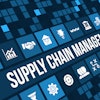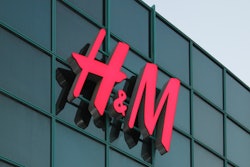
HAVI, a global company innovating, optimizing and managing supply chains of leading brands in foodservice, has identified five foodservice industry trends for 2017 and beyond. They include increasingly diversified consumer demand, an emphasis on homemade, traceability, sustainability and technology such as mobile ordering apps.
As consumers, we see the effect these trends are having on stores and restaurants. Menus and supermarket produce sections feature fresh, locally-sourced foods; there is greater transparency in food labeling; ordering kiosks and mobile apps facilitate personalization; and meal kit delivery services marry consumers' preference for convenience and homemade. What we do not always see is how these trends are impacting operations (back of store) and increasing the complexity of supply chains.
“Rapidly evolving consumer eating and shopping behaviors continue to transform the foodservice landscape. Consumers want fresher, healthier foods, and kiosks and mobile apps that allow them to rapidly customize their orders,” says Scott Saunders, senior vice president, supply chain integration, HAVI. “Supply chains have to evolve to support these needs and a critical factor is the ability to use and share data gathered from point of sale and with suppliers and partners, as well as insights gathered from current events and weather patterns. The information can be used to make faster decisions, drive growth and increase efficiencies in supply chain and operations too.”
Here are the key foodservice trends for 2017 that HAVI has identified and their impacts on supply chain:
- Consumer preferences are increasingly diversified. The food/meal customization trend shows no signs of slowing as consumers continue to pursue foods that align with their personal preferences and nutritional needs and values (e.g., organic, non-GMO, farm-to-table, gluten-free, dairy-free, etc.). Organic food sales in the United States reached a record $43.3 billion in 2015, according to the Organic Trade Association, and Transparency Market Research predicts the global gluten-free food market will reach $4.89 billion by 2021. Expect to see greater transparency of supporting claims about where and how foods are processed too. To meet increasing consumer demand for variety and personalization in their food choices, supply chains will become even more global, collaborative and nimble. End-to-end visibility along the supply chain will remain crucial not only to provide consumers detail about suppliers and production, but also to enable businesses to successfully respond to variable demand and optimize inventory levels. Similarly, “fix it and forget it” thinking around supply chain network optimization will lessen as businesses adopt a more dynamic approach to network management that enables them to identify and respond to shifts in demand by optimizing their assets and systems for efficiency (e.g., sourcing from several regional suppliers to meet demands for fresh and reduce costs as opposed to one central supplier, moving inventory among stores rather than from distribution centers, etc.).
- Technology will continue to drive modernization of supply chains. As consumers continue to shop when and how they want, technology is affording brands opportunities to personalize customer experiences (e.g., anticipating purchases, making recommendations and remembering preferences) as data are collected and analyzed almost instantaneously. Businesses must ensure it is not just marketing and sales teams who are seeing this information, but that suppliers, distributors, retailers and their partners all are digitally connected along the supply chain for better visibility, increased collaboration and greater transparency as well. Data management and analytics tools can help businesses make sense of the plethora of data being collected to provide more seamless distribution and fulfillment across channels and to identify and prioritize drivers of cost and performance. Use of predictive analytics and simulation modeling enables more accurate forecasting and demand planning. At the same time, Internet of Things (IoT) affords a more precise means of tracking assets through the supply chain. Expect greater interest in data management technology to optimize supply chains as businesses continue to see success with customer-facing tools and realize the bottom line impact of integrating demand signals up the supply chain to distributors and suppliers for more efficient production and movement of products.
- Helping homemade happen. Fresh to-go meals are commonplace in supermarkets, fresh foods are increasing in convenience stores and meal kit delivery services represent a $1.5 billion industry, according to Packaged Facts, that is expected to grow, thanks in large part to millennials who want a homemade food experience despite limited time, supplies and sometimes even meal prep space. Some supermarkets are offering their own meal kits similar to HelloFresh and Blue Apron at a lower cost. And, retailers often have an advantage since consumers visit their stores regularly, know where things are and trust in their food safety. Datassential predicts supermarket prepared food will grow 3.8 percent in 2017. Conventional ideas of where and how to purchase foods are shifting and lines are becoming blurred (e.g., grocers featuring in-store restaurants, big box retailers selling groceries online and convenience stores offering fresh foods), but having the right data platform and visibility are essential whether businesses are dealing with brick and mortar or virtual locations.
- Traceability begets confidence. Traceability is a cornerstone of successful supply chain management in any industry, but especially in foodservice. Traceability is crucial in helping restaurants, farmers and food processors meet requirements of the Food Safety Modernization Act (FSMA), mitigate recalls and foodborne illness outbreaks, meet consumer demand and support clean eating trends (disclosure of ingredients and their origins). Companies will improve traceability through technologies that help automate data collection and management (e.g., sensors and RFID) and through processes like dynamic network management. Broader collaboration across supply chains—enabled by cloud computing—will bring a higher degree of transparency and lower cost technology to integrate and analyze the data.
- Sustainability and the circular economy. We are seeing and will see more promise put into practice related to circular economy efforts throughout industries. This is supported not only by increased political efforts (such as the U.K. Labor Party’s recent pledge to place sustainability and circular economy efforts at the heart of its policies), but also as a byproduct of increased efforts to tackle issues like paper cups recycling and the reduction of food waste. Designing with the end in mind and identifying ways to close the loop are increasingly senior management level concerns. As more applicable technologies and processes reach the market, companies have realized not only the long-term resource and environmental impact, but the cost savings and long-term gains toward their bottom line and consumer perception of their brand when they adopt a circular economy approach to use resources efficiently during production and distribution, through use and during reuse and repurpose of products.



















